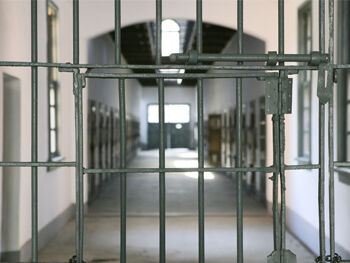Expert comment Last updated 26 April 2019

Professor David Wilson and Professor Liz Yardley examine why women are driving the rise in popularity of 'true crime' and what leads some to start relationships with violent offenders.
The new Hollywood blockbuster Extremely Wicked, Shockingly Evil and Vile about the serial killer Ted Bundy – played in the movie by Zak Efron – coupled with the publication of Bauer Media Group’s new Crime Monthly has led to a great deal of fevered speculation about “true crime” in general and, specifically, why women seem to consume this subject matter in greater numbers than men. A number of online and print editorials have been concerned, for example, with Why Women are Fuelling the growth of True Crime Podcasts and even BBC Radio 4’s Woman’s Hour has covered True Crime: Five Reasons why women Love it.
True crime is a problematic and diverse genre, as evidenced by just some of its products mentioned above, and has been described by one American critic as “crime fact that looks like crime fiction”. However, it is generally accepted by academic criminologists that “true crime” misrepresents crime as a whole so that violent and sexual crimes are over-represented, whilst volume crimes, drug related crimes and low-level deviance are hardly covered at all.
As for why women consume true crime in greater numbers than me, Woman’s Hour tried the hardest to get to the heart of the matter by suggesting that this gender n difference was created by: fear of crime; compassion for victims; a fascination with motives; it provides a puzzle to work out; and escapism. However, even a casual glance at these purported causes doesn’t really reveal why more women than men might want to escape in this way, be fascinated by the motives of the offenders, or want to show compassion to some of the killers and serial killers that populate the true crime genre.
Believe it or not, but some men are frightened by crime too and have equal measures of compassion.
Conspicuous by its absence in this list of supposed causes of the gender disparity on show is any idea linked to evolutionary psychology, or forensic criminology which might explain these differences. Yet, in our work with violent men we have often noted – and occasionally commented upon – a related phenomenon whereby women befriend, write to, visit, and sometimes form relationships and even marry violent men who have been caught and imprisoned. What is it that attracts women (and we also note a smaller number of men) to those who have committed the most heinous of crimes? Do they want the fame and attention that comes with being the other half of a killer? Are they deluded in thinking that the killer is innocent? Do they believe that they are the one who can change the killer and make them a better person? Are they simply the killer's next victim - providing an opportunity for them to control, abuse and manipulate from behind bars? 
Here are just a few recent (there are scores of historic cases and North American cases that we could cite too) British examples:
Thurzie O'Neill and Lee Barrass.
Barrass was convicted of the 2000 murder of Big Issue Seller Beth Myles (19). Thurzie struck up a friendship with Barrass after writing to him. The mother of three moved from Somerset to Scotland within months of first writing to him. They married in 2005 at Dumfries Prison. She initially believed he was innocent. He started to control her from his prison cell, stopping her from going out or having male visitors, "He was controlling my every move". Thurzie divorced him in 2010.
Siobhan Monaghan and Brendan McConville.
McConville is serving a 25-year sentence for killing PSNI officer Stephen Carroll in 2009. Siobhan met him when she began writing to him. They married in Maghaberry prison in 2016. She lives in Oxford.
David Ferguson and Carol Nash.
Ferguson was convicted of murdering his ex partner Susan Kent in 2000. He was described at trial as obsessed with rape and murder. He married Carol at HMP Wakefield in August 2015 after proposing to her in 2013. Ferguson apparently maintains a blog - which his friends on the outside update for him. Not much info about Carol - Ferguson appears to have control of the narrative.
Christine Travis and Daniel Archer.
Archer bludgeoned sex worker Nasra Ismail to death and cut her body into pieces with a hacksaw. He put her remains in a suitcase. Afterwards he took the case on a bus before dumping it in the Regents Canal, North London. He was jailed for the crime in 2005. He married his pen pal Christine in 2008. Christine started writing to him when he was on remand in 2004. She started to visit him at Full Sutton every fortnight after he was jailed. He proposed to her in the visitors' room.
Tracy Cope and James Morgan.
Tracy married Morgan - a killer on Death Row in the United States - in 2007, four years after she became his pen pal. Morgan was sentenced to death for stabbing 34-year-old Patrina King in 1997. Tracy moved from Nottinghamshire to the US to be closer to Morgan. in North Carolina. She had only visited Morgan five times before deciding to leave England to marry him
In thinking about this phenomenon we would like to propose a typology – which may throw further light onto the gender disparity that we have described above more generally about true crime consumers. Our typology is: the superfan; the fixer; the denier; and, the damsel in distress.
|
Type |
Initial Description |
|
The Superfan
|
These individuals are essentially followers of the killer who develop an infatuation with them. They revel in the infamy and attention that their relationship brings. They believe they are special because the killer has chosen them – indeed the killer may have many adoring fans all pledging their love for him / her. |
|
The Fixer
|
These individuals develop relationships with killers because they think that they can change them, they can bring out the ‘real’ person – essentially the killer is their project. Often believe that the killer is actually a victim of a terrible upbringing / unhappy childhood. |
|
The Denier
|
Those who think the killer they are in love with didn’t commit the crime for which they are convicted and may lead / become involved in campaigns to challenge their conviction. |
|
The Damsel in Distress
|
These individuals are looking for a big, paternal alpha male to ‘protect’ them or a woman who is 'different' from their previous girlfriends / partners, with whom they have had abusive / negative relationships. |
We imagine that it will be our last category in the typology that will attract the greatest criticism, because it is the only category that is avowedly “female” and therefore gender specific. After all men can also be superfans, fixers and deniers. However, the damsel in distress is specifically seeking an “alpha male” – a specific type of man performing masculinity in a very stereotypical way – and which, we would argue true crime as a genre values above all else in those male offenders its chooses to focus its gaze upon. True crime wants men, well, to be “MEN” in a way that they will be risk taking, sexy, scary monster, devil may care psychopaths – “criminal undertakers” – who, no matter what, will get the job done.

True Crime, like no other genre, values what we have come to describe as “toxic masculinity”.
The subtext here is, of course, that this sexy monster, toxic man will produce offspring who in turn will ensure that it will be those children and their children’s children who will survive. In a neoliberal, winner-takes-all culture which values individuals who are “go-getters”, risk taking entrepreneurs, who can blame those women who want to ensure that their DNA will get passed on from one generation to the next. After all, we are shaped in evolutionary terms by the pressure to survive and reproduce.
In making these observations, which are based on our applied and academic work, we are not seeking to be provocative, but rather trying to engage people with another reality of this debate that has so far been ignored.
In other words, to really understand why so many women are attracted to true crime perhaps we also need to discuss why true crime puts so many predatory men on a pedestal.